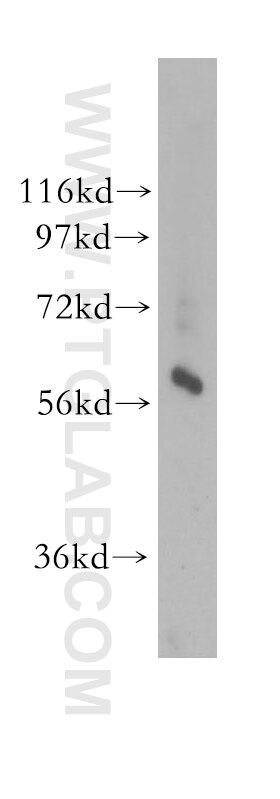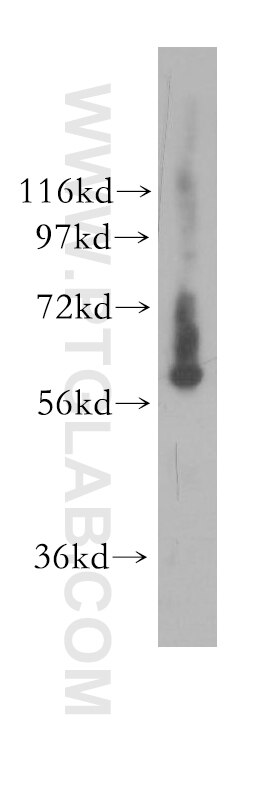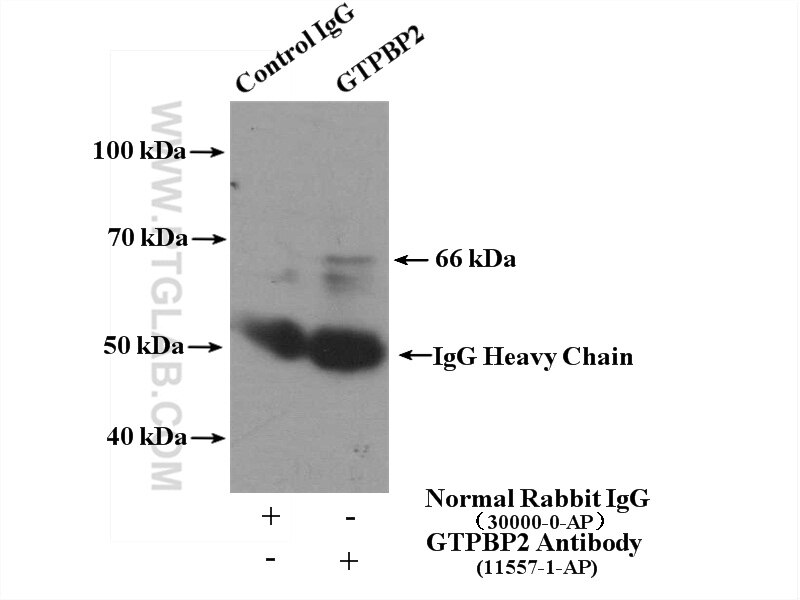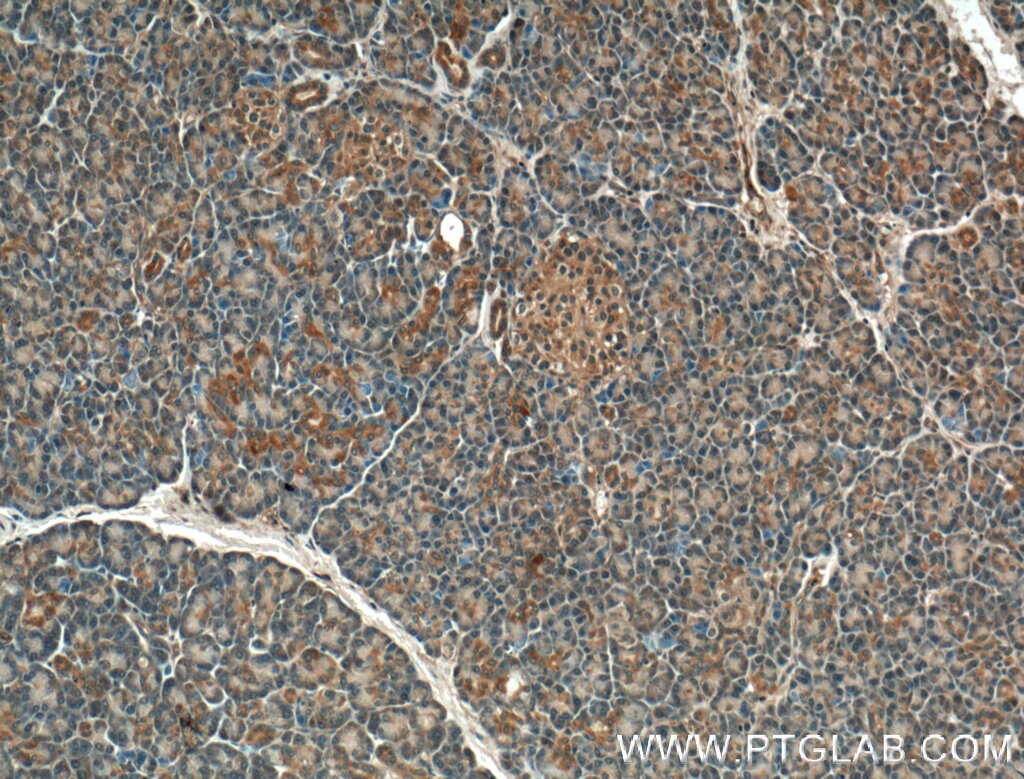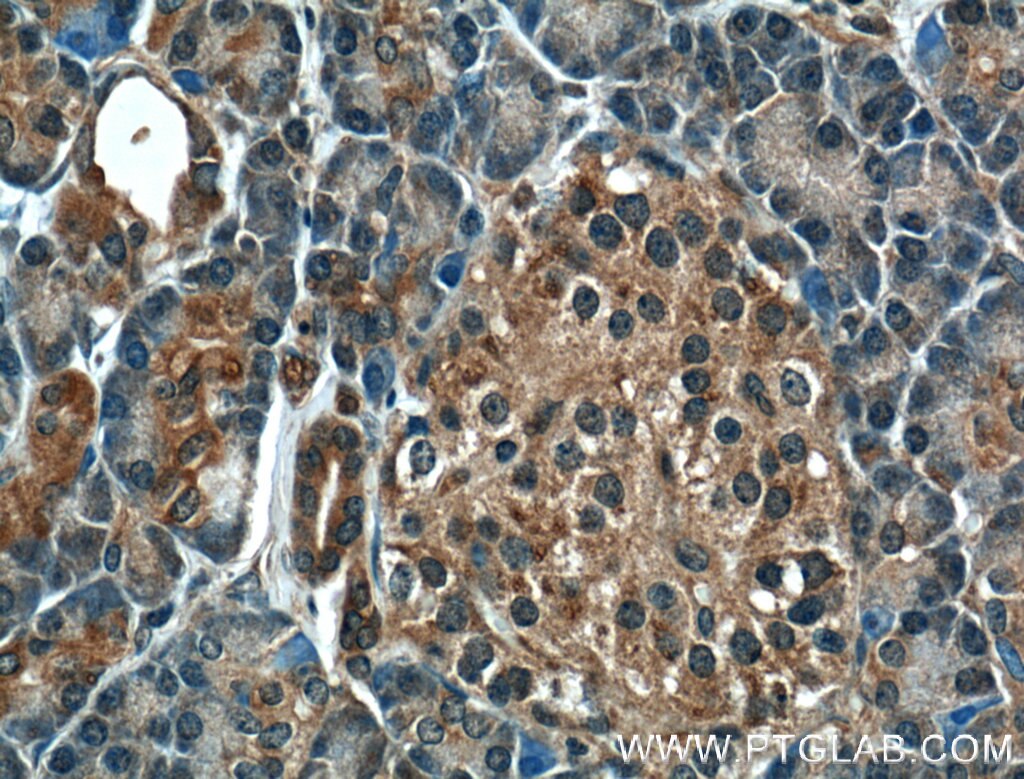GTPBP2 Polyclonal antibody
GTPBP2 Polyclonal Antibody for WB, IP, IHC, ELISA
Host / Isotype
Rabbit / IgG
Reactivity
human, mouse
Applications
WB, IP, IHC, ELISA
Conjugate
Unconjugated
Cat no : 11557-1-AP
Synonyms
Validation Data Gallery
Tested Applications
| Positive WB detected in | human kidney tissue, human spleen tissue |
| Positive IP detected in | mouse spleen tissue |
| Positive IHC detected in | human pancreas tissue Note: suggested antigen retrieval with TE buffer pH 9.0; (*) Alternatively, antigen retrieval may be performed with citrate buffer pH 6.0 |
Recommended dilution
| Application | Dilution |
|---|---|
| Western Blot (WB) | WB : 1:500-1:2000 |
| Immunoprecipitation (IP) | IP : 0.5-4.0 ug for 1.0-3.0 mg of total protein lysate |
| Immunohistochemistry (IHC) | IHC : 1:50-1:500 |
| It is recommended that this reagent should be titrated in each testing system to obtain optimal results. | |
| Sample-dependent, Check data in validation data gallery. | |
Product Information
11557-1-AP targets GTPBP2 in WB, IP, IHC, ELISA applications and shows reactivity with human, mouse samples.
| Tested Reactivity | human, mouse |
| Host / Isotype | Rabbit / IgG |
| Class | Polyclonal |
| Type | Antibody |
| Immunogen | GTPBP2 fusion protein Ag2113 相同性解析による交差性が予測される生物種 |
| Full Name | GTP binding protein 2 |
| Calculated molecular weight | 602 aa, 66 kDa |
| Observed molecular weight | 60 kDa |
| GenBank accession number | BC028347 |
| Gene symbol | GTPBP2 |
| Gene ID (NCBI) | 54676 |
| RRID | AB_2115381 |
| Conjugate | Unconjugated |
| Form | Liquid |
| Purification Method | Antigen affinity purification |
| Storage Buffer | PBS with 0.02% sodium azide and 50% glycerol pH 7.3. |
| Storage Conditions | Store at -20°C. Stable for one year after shipment. Aliquoting is unnecessary for -20oC storage. |
Protocols
| Product Specific Protocols | |
|---|---|
| WB protocol for GTPBP2 antibody 11557-1-AP | Download protocol |
| IHC protocol for GTPBP2 antibody 11557-1-AP | Download protocol |
| IP protocol for GTPBP2 antibody 11557-1-AP | Download protocol |
| Standard Protocols | |
|---|---|
| Click here to view our Standard Protocols |
